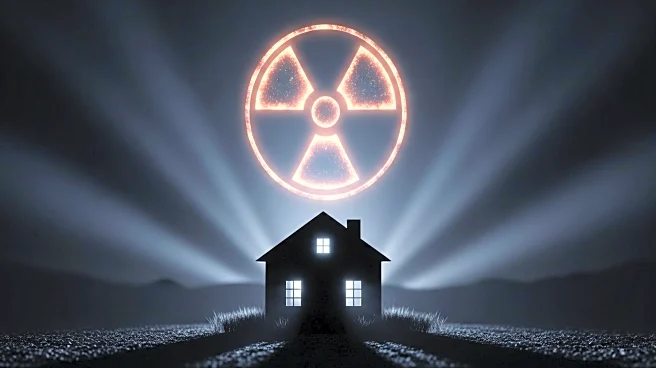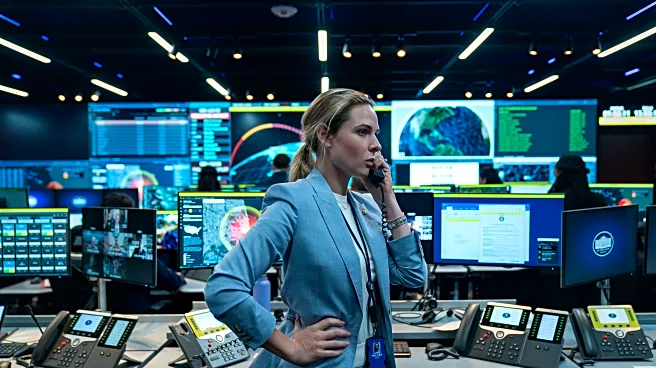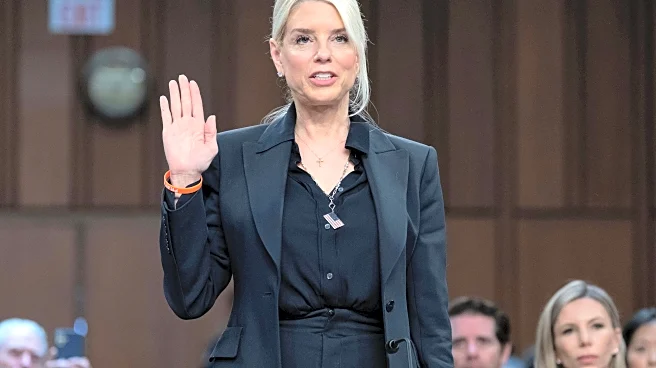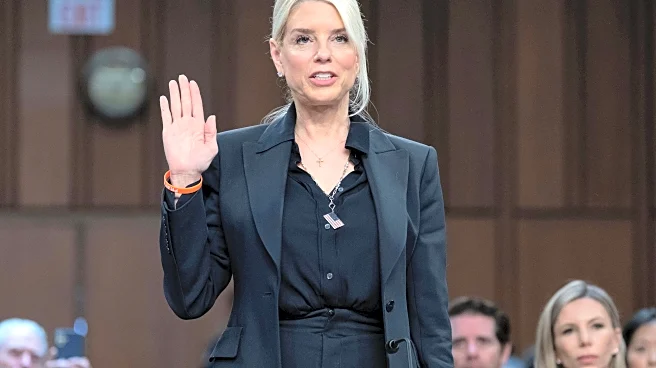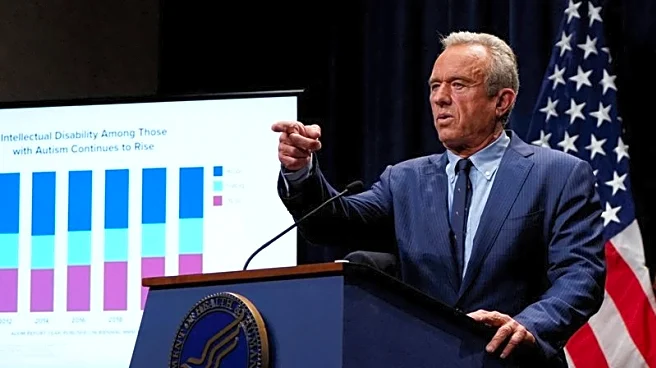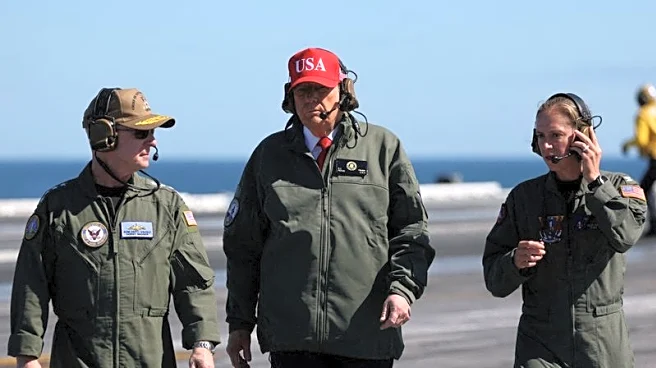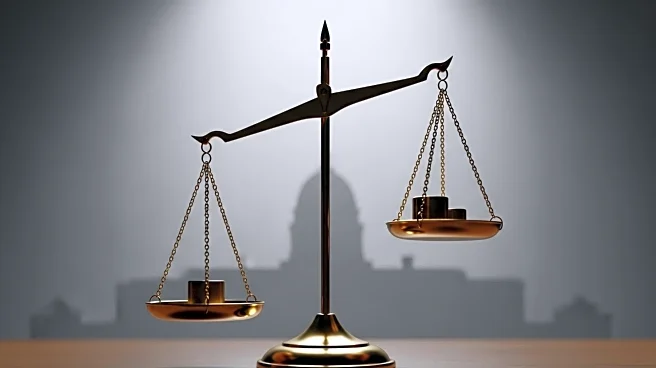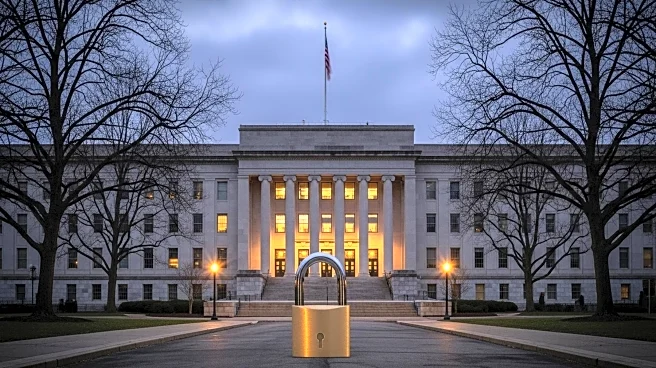What's Happening?
Kathryn Bigelow's latest film, 'A House of Dynamite,' delves into the sudden emergence of a nuclear threat against the U.S. mainland. The film begins with a routine morning at the White House, which is disrupted by the launch of an intercontinental ballistic missile from the Pacific. The missile, initially thought to splash down in the Sea of Japan, is discovered to be headed towards Chicago, posing a dire threat to millions of Americans. The film unfolds in three sections, each replaying the same moments from different perspectives, including those of Captain Olivia Walker, National Security Advisor Jake Baerington, and the President. Despite its gripping premise, the film's narrative structure, which involves rewinding and replaying events, somewhat diminishes its initial tension.
Why It's Important?
The film's exploration of nuclear threats is significant as it taps into ongoing global anxieties about nuclear warfare. By portraying the rapid shift from normalcy to crisis, 'A House of Dynamite' highlights the fragility of peace and the potential for catastrophic events. The film contributes to the cinematic tradition of nuclear anxiety, joining recent works like 'Oppenheimer' and upcoming projects such as 'Ghosts of Hiroshima.' While the film aims to raise awareness about nuclear dangers, its repetitive narrative may dilute its impact, leaving audiences with a sense of urgency but also frustration over the lack of resolution.
What's Next?
The film is set to open in theaters before streaming on Netflix, potentially reaching a wide audience and sparking discussions about nuclear policies and preparedness. As viewers engage with the film, it may prompt debates on the adequacy of current defense strategies and the importance of diplomatic efforts to prevent nuclear escalation. The film's release could also influence public opinion and policy discussions, encouraging leaders to prioritize nuclear disarmament and international cooperation.
Beyond the Headlines
Beyond its immediate narrative, 'A House of Dynamite' raises ethical questions about the portrayal of nuclear threats in media. The film's depiction of high-stakes decision-making at the highest levels of government invites reflection on the responsibilities of leaders in crisis situations. Additionally, the film's focus on individual perspectives within a larger geopolitical context underscores the human element in global security issues, emphasizing the need for empathy and understanding in policy-making.

